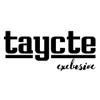Sasan Amini is the CEO and co-founder of Clear Labs. He holds a Ph.D. in genomics from Princeton University and spent three years at Illumina, the market leader in next-generation sequencing solutions.
A misconception has run amok in the food safety industry. You’ve likely heard the terms “whole genome sequencing” and “next generation sequencing” a lot lately. It’s common even for industry insiders to use the terms interchangeably. However, while the technologies are related, they’re not the same.
Next-generation sequencing (NGS) is the overarching descriptor for sequencing millions of data points in parallel from one sample or multiple samples per machine run. Whole genome sequencing (WGS) is one application of next-generation sequencing. In other words, WGS is a special type of NGS, but NGS isn’t limited to WGS. NGS platforms can also support non-WGS applications like targeted sequencing or shotgun metagenomics.
In fact, for routine pathogen testing, WGS is not the right tool for food manufacturers. Targeted sequencing would be more helpful. Since it can get confusing, it’s helpful to break down the distinctions between WGS and targeted sequencing through the lens of routine pathogen testing.
The shortcomings of WGS for routine pathogen testing

Whole genome sequencing is the process of mapping the complete DNA sequence of an organism to a specific database, and it used to be a time-intensive and costly project. To put it in perspective, in 1990, the Human Genome Project was announced. However, it wasn’t completed until 2003, and the cost was $2.7 billion.
Fortunately, since then, WGS has become faster and cheaper. During this time, the technology has also proved useful for food safety professionals, becoming instrumental for traceback analysis of foodborne illnesses and aiding in spoilage and shelf-life analyses. Compared to conventional methods, WGS has been able to better detect small outbreaks, and we can obtain strain-level information about antibiotic resistance, virulence factors and gene annotation from WGS data.
That said, WGS is mainly an investigative tool, and it is not the right approach for routine pathogen testing for a variety of reasons. For example, WGS is still far too expensive for any type of daily or weekly testing. Even the most efficient labs spend hundreds of dollars per sample to do WGS. These labs also need to be staffed by highly trained professionals, as WGS requires special expertise to prepare sequencing libraries. These procedures can only be automated on a small scale, making the overall process demanding and costly.
Additionally, while WGS no longer takes 13 years to conduct, it still is too slow for most food manufacturers. This is because the technology requires a clonal isolate to collect the necessary data, which takes time and intensive microbiological work to generate, on top of the time required for sequencing. Test-and-hold programs need results quickly. Manufacturers cannot wait several days to a week for results.
With WGS approaches, food samples are also complex to the point of frustration. One food sample alone might contain several serovars of a bacteria. However, because WGS requires a pure single isolate, you can have a hybrid of multiple serovars, which can be misleading.
But WGS can only analyze one serovar at a time, thus giving you a limited view of your food sample.
Finally, WGS generates a lot of data points. Some food companies may not feel comfortable analyzing all that data, while others may not feel the need to have so much data at their fingertips.
Targeted next generation sequencing: A breakthrough technology for routine pathogen detection
These problems have pushed food manufacturers and labs to look for an alternative to WGS to answer their safety needs and concerns. Luckily, the technology already exists and industry officials need look no further than targeted next-generation sequencing.
For each of WGS’s shortcomings, a targeted NGS platform provides a solution. Whereas whole genome sequencing looks at the entire genome, targeted NGS looks at many sites within several genetic markers. While this might sound like a limited PCR test, it’s different in a few fundamental ways. PCR-based tests only look at one genetic marker (or, in case of multiplex PCR, at a couple of genetic markers) rather than multiple genetic markers as is done in targeted NGS. As a result, the accuracy of PCR tests is lower than that of targeted NGS.
The other fundamental difference between PCR and a targeted sequencing-based approach is that PCR can only flag the presence or absence of a genetic marker. On the other hand, sequencing can read every single building block of a targeted region, benchmark that against a previously verified reference, and confirm whether the target matches the reference across all those hundreds to thousands of building blocks. That is why PCR-based tests can also miss or misidentify pathogens, resulting in higher rates of false negatives and false positives, while sequencing can deliver the highest degree of certainty.
NGS solutions are the clear way forward for the industry, outperforming PCR and WGS in virtually every category. NGS platforms give food labs and manufacturers more control over the testing process, insofar as users can choose the depth of molecular characterization of pathogens. In 24 hours, NGS platforms can do speciation, serotyping, and strain-typing all in one test–at the same price per sample as PCR.
In many ways, targeted NGS is the happy medium between PCR and WGS. NGS platforms are cheaper and faster than WGS. It can work on clonal isolates or on mixed populations, something that WGS cannot do. What is more, the results of a targeted NGS test are much easier to read. Food safety professionals do not have to sift through mounds of data or hire a professional bioinformatician to do it for them. Instead, targeted NGS platform’s software creates easy-to-read reports that identify species, serovars, and strains, depending on the application.
A new era of food safety is upon us, and while WGS will undoubtedly play a role in this era, it isn’t the right technology for routine pathogen testing. Leave that for the next generation of NGS platforms.





















